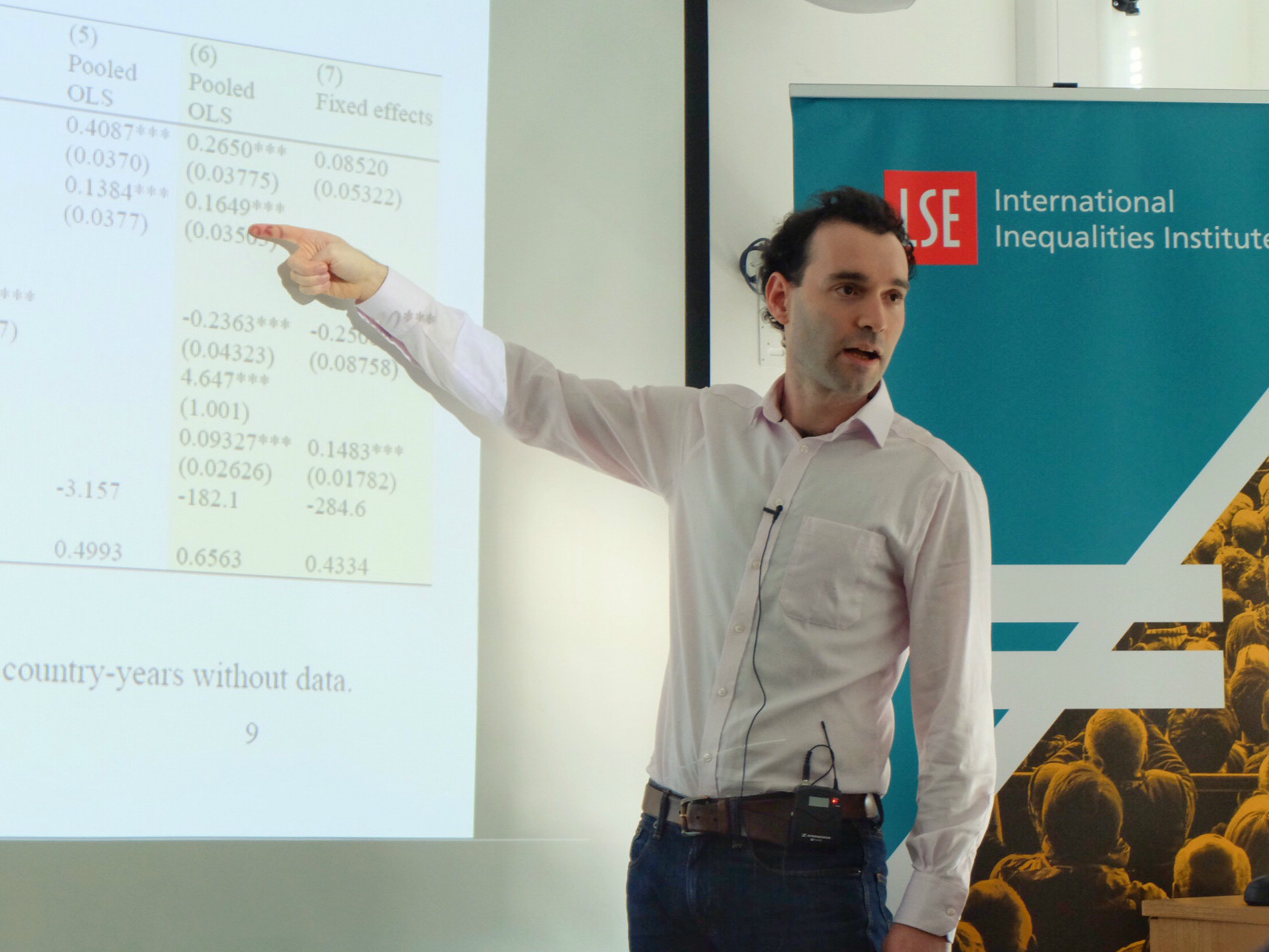This seminar presented findings from the paper with the same title, representing the first in-depth analysis of the changing composition of the global rich and the rising representation of developing countries at the top of the global distribution. The authors construct global distributions of income between 1988 and 2012 based on both household surveys and the new top incomes data derived from tax records, in order to capture the rich who are typically excluded from household surveys. They find that the representation of developing countries in the global top 1% declined until about 2002, but that since 2005 it has risen significantly. This coincides with a salient decline in global inequality since 2005, according to a range of measures. The authors compare their estimates of the country-composition and income levels of the global rich with a number of other sources – including Credit Suisse’s estimates of global wealth, the Forbes World Billionaires List, attendees of the World Economic Forum, and estimates of top executives’ salaries. To varying degrees, all show a rise in the representation of the developing world in the ranks of the global elite.
Paul Segal is a Visiting Fellow at the LSE III and Senior Lecturer in Economics at the Department of International Development, King's College London. He has written on global inequality and poverty, where he pioneered the use of the new top incomes data in analysing the global distribution of income. He has also written on the economics of resource revenues and their potential role in inequality and poverty reduction. He is currently working on the determinants of inequality and wages in Mexico since 1800, and on the political economy of income distribution in Argentina over the 20th century. For 2017 he is on a Leverhulme Research Fellowship working on new approaches to economic inequality.
Watch Below:
 Who are the Global Top 1%?
Who are the Global Top 1%?